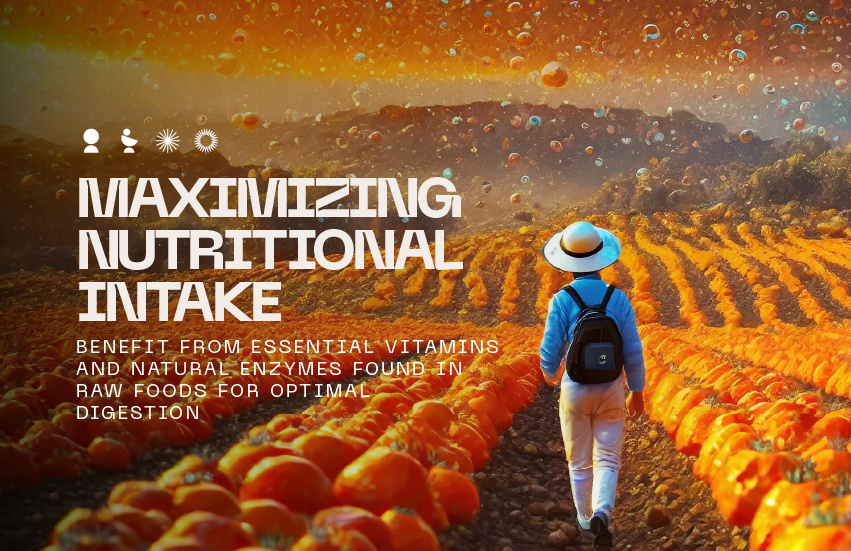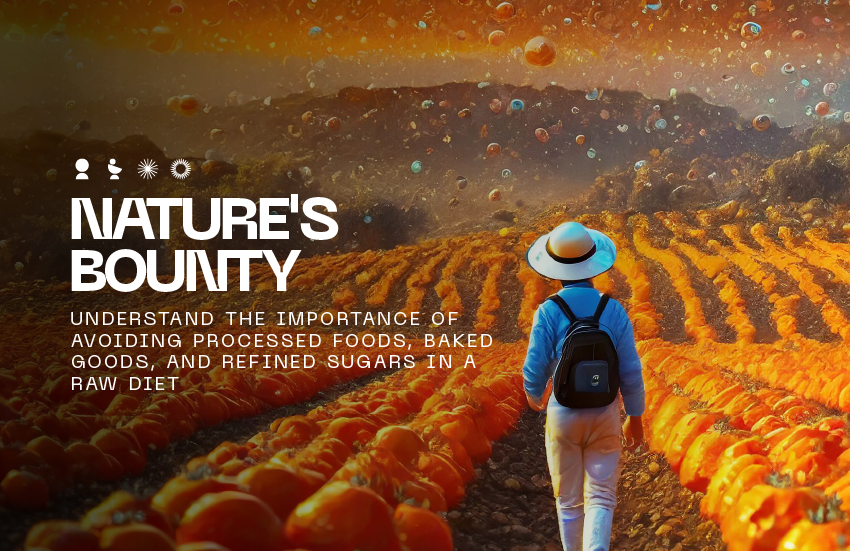Blog
Raw Food Diets: A Fresh Perspective on Nutrition

Contents
What is a Raw Food Diet?
The Nutritional Benefits
Raw Diets Allowed and Restricted Foods
Potential Drawbacks
Getting Started with a Raw Food Diet
Tips for Success
Conclusion
As pollutants and contaminants have made their way into more aspects of our lives, many seek opportunities to lead cleaner lifestyles. Raw food diets are a popular choice for those on this mission.
But, what are raw food diets? What do they entail?
Essentially, they encourage you to eat whole, organic foods in their natural state. The aim is to eliminate pasteurized or processed foods from your diet.
This approach to healthy living has seen rapidly growing popularity. More and more people are turning to this rising trend. Embracing naturopathic medicine and tackling wellness from every aspect—mind, body, and diet.
In fact, they aren’t only beneficial for humans, but for pets too.
Join us as we discover what raw food diets are and how to make healthier, more effective choices.
What is a Raw Food Diet?
Raw food diets involve eating unprocessed or prepared foods. Preparation methods include blending, juicing, and drying instead of cooking.
The concept is to consume foods as close to their natural state as possible. Cooking and other forms of processing changes the original structure of the products.
People opt to follow these diets to varying degrees. Some are strict, eating nothing but raw foods, while others choose to follow a more relaxed approach. There are, however, three main types of raw food diets as listed below.
- The vegan diet is the most common choice, limiting food options to non-animal based produce.
- A vegetarian diet excludes meat, poultry, and fish, but allows animal products like eggs and milk. The idea is to ensure that all products are raw and unprocessed.
- Finally, the omnivorous diet allows you to eat all animal and plant-based foods, as long as they’re unprocessed and raw.
According to the founder of the raw food diets, Dr. Maximillian Bircher-Benner of Sweden, foods are more nutritious in their natural state. He believed that foods contain the sun’s energy and any degree of processing would reduce their nutritional value.
The Nutritional Benefits
As with any plan that includes consuming high volumes of fruits and vegetables, raw food diets present notable health benefits. Below are some of the reported results from following these diets.
- Better vitality
- Energy boost
- Weight loss
- Improved overall health
- Better sleep and mental clarity
Here are the nutritional benefits of raw diets.
Less sugar
Processed foods are the source of most sugar, fat, and salt in our daily diets. By eating raw foods, you’ll significantly reduce your sugar intake.
High in fiber and antioxidants
Increased antioxidants and fiber in raw foods fill the gap in a standard adult diet. This increase results in a more regular digestive system and improved overall health.
Weight loss
Consuming lower-calorie foods helps your body burn fat faster. Along with adopting a more active lifestyle, you’ll see the extra weight melt away in no time. It’s also a sustainable way to maintain your ideal weight and healthy lifestyle.
More nutrients
Introducing more fruits, vegetables, legumes, and nuts provides more vitamins, healthy fats, protein, and minerals. Since the cooking process destroys many of these nutrients, it’s better to eat them raw.
Retain enzymes
Cooking alters or destroys essential vitamins in your food. They also impact the natural enzymes that help your body digest foods properly. Since each product has a unique nutritional makeup, it’s best to consume them in their natural form.
Improve heart health
Fresh fruits and vegetables have been linked to reducing blood pressure and the risk of stroke or heart disease. Raw foods like nuts have also been proven to improve cholesterol and cardiovascular health.
Raw Diets Allowed and Restricted Foods
To see success with your dietary change, your daily food intake should contain at least 75% raw produce. The below table lists all foods that are and are not allowed in the diet. Just remember that the only requirement is that they aren’t processed or heated beyond 104–118°F (40–48°C).
| Allowed | Not Allowed | ||
| Fresh fruits | Raw vegetables | Baked goods | Table salt |
| Sprouts | Raw eggs or dairy | Pasta | Chips |
| Nuts and seeds | Cold-pressed olive or coconut oil | Alcohol | Coffee and tea |
| Grains and legumes | Raw nut milk and butter | Roasted nuts and seeds | Cooked fruits, vegetables, meats, and grains |
| Fermented foods (kimchi or sauerkraut) | Dried fruits and meats | Refined oils | Refined sugars and flour |
| Seaweed | Raw fish and meat | Pastries | Processed foods |
Potential Drawbacks
While there are many benefits to following raw diets, when not done correctly, there could also be significant drawbacks. Below are some concerns to consider before starting any of these diets.
May cause nutrient deficiencies
A raw vegan diet, for example, is far too restrictive. By avoiding animal products like eggs, dairy products, and meat, your body lacks the following key nutrients:
- Calcium
- Iron
- Protein
- Vitamin D
- Iodine
- Vitamin B12
If you’re using this approach to “clean” your diet, it’s sufficient. As a long-term diet plan, however, it’s too restrictive and would require supplements to prevent deficiencies.
Contaminants that can cause illness
The cooking process kills off any contaminants that may cause food-borne illness in foods like meat products. Bacteria like E. coli and Salmonella often result in harmful conditions with dangerous side effects.
Not budget friendly
The safest way to overcome the above-mentioned bacteria is to consume organic products. While fruits and vegetables may be friendlier on your pocket, organic foods are significantly more costly.
Challenging to adhere to
Eating raw, unprocessed foods sounds easy enough, but these diets are typically more difficult to follow. Safe preparation techniques include germinating, sprouting, and dehydrating, which can become tedious for some.
Getting Started with a Raw Food Diet
As with any significant dietary changes, it’s best to make it a gradual adjustment. Start off by changing one meal at a time. For example, have a packed smoothie to start your day.
Do your research and be prepared with suitable replacements. Fresh or dried fruit, for example, are fantastic substitutes for sugar. These make ideal snacks when your sweet tooth acts up.
Ensure that you have all required appliances and have planned your menu in advance. Also, a detailed shopping list helps to reduce impulsive buying and keeps your plan on track.
Tips for Success
Investing the time to prepare your food may seem tedious, but they make a significant difference to your raw food diet experience. Some preparation strategies include:
- Dehydrating or drying foods at temperatures that don’t exceed 104° to 118°F. A dehydrator can be used to warm food.
- Soaking beans and other legumes in water.
- Sprouting grains instead of eating whole grains.
- Blending and juicing fruits and vegetables and making smoothies.
- Chopping fruits and vegetables in advance makes mealtimes easier and faster.
As you plan your meals for the coming week(s), ensure that all your nutritional needs are met throughout the day. Avoid potential deficiencies by adding supplements and understanding the nutritional makeup of each ingredient.
Conclusion
Making the change to a raw food diet doesn’t have to be a daunting task, nor does it have to be drastic. Remember to do significant research before you start and plan accordingly. To be safe, always consult a professional.
Reach out to the team at Livv Natural to explore a naturopathic approach to your overall wellness. A healthy and well-balanced lifestyle includes mindful eating and increased activity.
Author: Dr. Jason Phan NMD – Founder of LIVV Natural – Anti-aging – regenerative medicine – peptide therapy



